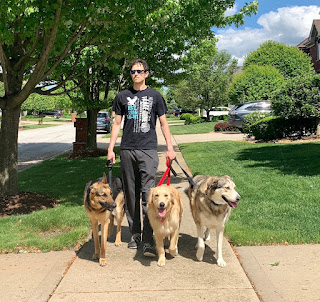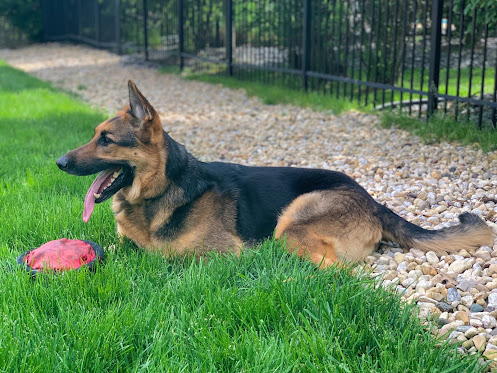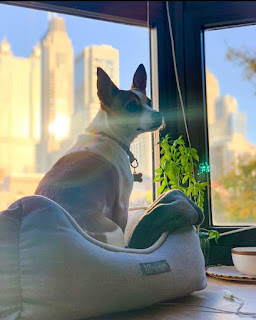STOP Taking Your Dog for a "Walk"
Stop taking your dog for a “walk.” We need to master the basics first.
Whoa. What do you mean do not take my dog for a walk? Are you crazy? Well yes, I am a bit crazy, but that’s beside the point! A well-structured walk can be one of the best tools you have to establish leadership and shape the relationship with your dog.
Walks provide great exercise for humans and dogs. There is some stat out there about having a dog increases your expected life span. I am convinced that a big part of that is because of the amount of additional walking humans do. There is so much research and information about how walking more (for humans) is one of the best ways to improve your health. Therefore, it’s great for the both of you!
So why are you telling me to stop taking my dog for a walk? Remember how I said a well-structured walk CAN be one of the best tools in dog training? When not done properly, it can be detrimental! Dogs learn by routines and associations. Therefore, if you are allowing the walk to reinforce bad behavior and state of mind and not being in the leadership position, that becomes the routine! That is what your dog becomes accustomed to. If you are not the leader on the walk, you are not the leader in the house. If your dog is not calm on the walk, he's probably not calm a lot of other times! It’s a relationship. It’s leadership. It's a lifestyle. Everything you do with your dog affects EVERYTHING else. Therefore, a bad walk affects a lot of other things!
So then what should I do? Well, there are a lot of things you should be doing, and that’s why every client I work with gets my book FIRST. We need to give you education on how to live with your dog properly because, once again, it affects everything else. However, for the sake of this post let's just talk about walking.
When I say don’t “go for a walk” I still want you to get your dog on a leash and go outside or even practice walking in the house. Let’s go back to square one. We need to make sure your dog can walk paying attention to you, in follow mode, on a LOOSE leash in a distraction-free environment before we go for a “walk.” If your dog cannot walk like this in the driveway, there is no way he is going to do it on a true walk!
Here are some ideas to get started:
- Pick a distraction-free area. This could be your kitchen, living room, driveway, or back yard. The driveway and backyard will inherently be harder.
- Do not say anything to the dog about walking and keep the walk calm. Be confident. “Wanna go for a walk? Are you sure? You really want to go. Yeah, let’s go for a walk.” People do this all the time and it only sets the walk up for failure. Simply grab the leash, put it on the dog, and go. By saying anything you are just amping the dog up for no reason when we want him to be calm and confident!
- As for what to use I would recommend using a slip lead to start. You as an owner need to work on leash handling skills and communicating through a leash. Dogs can understand leash pressure (we can teach you how to do this!) very easily when done properly. I would avoid using a harness. Harnesses are fine, but inherently the design of a harness teaches dogs TO PULL. If you are set on the harness, use it. But then you void any communication through the leash. You cannot talk to the dog, we have to communicate in ways they can understand, and the leash is one of the simplest ways when done properly! Remember the dog should NOT be pulling. The leash should look like a “J.” Therefore, if you are using a slip lead and the dog is pulling a lot we are not doing the job right and you need to take a step back!
- Focus on turns! Turns are key! Turn into the dog and away from the dog. The problem with a typical “walk” is that it is very linear. You go out the door and go and don’t look back and there is very little turning! I tell people to walk a mile in their driveway making a square. Go one way turning, then switch it up and turn the other way. A mile walk is a mile walk no matter if it's a square on the driveway or a walk around the whole neighborhood.
- Switch up the pace and move in tons of directions! One step at a time. Go quick, stop, then go slow. Run, then walk. Walk one direction, quickly turn, and go the other direction. You will easily be able to tell if the dog is in follow mode and paying attention to you. Make a star pattern for example. Remember you lead the walk not him! Show him you are in control.
- Teach the dog to pay attention to you by making that the routine! The turns will inherently do this. However, you need to work on something we call the Pay Attention to Me Game. The basic idea is we want to always create a positive association with the dog paying attention to you. Therefore, play the game, and also, only give dogs things it wants when paying attention to you and it is calm! This will reinforce the routine and idea that paying attention to you is good, and I only get things I want when I am calm. Here is a link to a video on the game (click here).
Bottom line: MASTER the driveway before you venture out. The typical “walk” is very linear and often way too much for dogs and owners. Start in your house, or in your driveway on a basic leash. Perfect the walk here. The dog should not be pulling. The leash should be LOOSE. The dog should be paying attention to you. It will potentially not be loose if the dog is not paying attention, and not engaged. This is where quick turns, switching up the pace, and moving in tons of directions will help. Play the “pay attention to me” game often! We also need to put in the proper leadership protocols in the home during everyday life. Everything affects everything else with dogs and that’s why we take the 24-7 approach. Because if the walk is a problem, I can guarantee there are a lot of areas we can address! Contact us for education!
Watch our video on this topic here:
Happy “Walking!”



